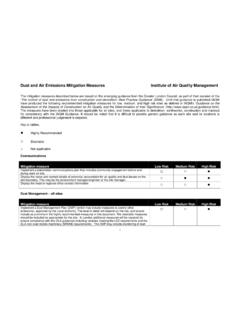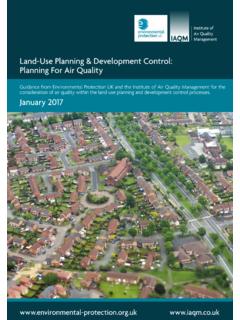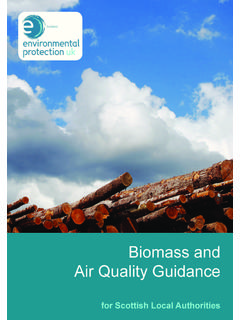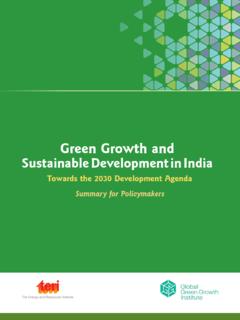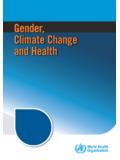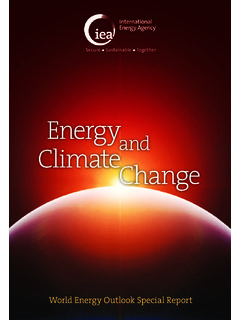Transcription of CHP Combined Heat and Power:Air Quality …
1 CHPC ombined Heat and Power: Air Quality guidance for local AuthoritiesCombined Heat and Power: Air Quality guidance for local authorities February 20122 About Environmental Protection UKEnvironmental Protection UK s vision is of a cleaner, quieter, healthier world . We seek changes in policy and practice to minimise air, noise and land pollution, bringing together stakeholders to inform debate and influence decision making. We are a national membership based charity and have been playing a leading role in environmental protection in the UK since Protection UK will become a wholly voluntary organisation in early 2012. This guidance is therefore unlikely to be maintained by Environmental Protection UK staff, and readers are advised to check for developments in policy and practice before using this Charity No.
2 221026 This guidance was commissioned by the London Borough of Camden, with funding provided by Defra under the Air Quality Grant programme. Combined Heat and Power: Air Quality guidance for local authorities February 20123 CreditsThe principal editor for this guidance was the consultant Ed Dearnley Further editing and proofing was carried out by Loveday Murley at Environmental Protection material for this guidance document has been supplied by Ed Dearnley, Environmental Protection UK and Bureau Veritas. This guidance incorporates material from documents published by the Carbon Trust and the Department of Energy and Climate Change. Parts of this guidance also draw from Environmental Protection UK s 2008 guidance Biomass and Air Quality guidance for local authorities which contains material supplied by AEA oversight group was set up to oversee development of this guidance .
3 Environmental Protection UK would like to thank the members of this group for their assistance with the development of this guidance . Group members included representatives from: Combined Heat and Power Association Environment Agency London Borough of Camden Department for Environment, Food and Rural Affairs Air Quality Experts Group SLR Consulting Stuart StearnThe discussion of commercially available products within this guidance , such as dispersion models, does not constitute endorsement of any kind. This document represents policy guidance from Environmental Protection UK, and does not necessarily reflect policy within the organisations of those who have contributed to, or were consulted on, its development.
4 Information relating to time relevant items, such as limit values, objectives, draft or other guidance documents, was correct at the time of : Heat and Power: Air Quality guidance for local authorities February 2012412E3 IndexExecutive Summary 6 Chapter 1: Background 8 What is Combined heat and power? 10 Types of CHP 10 Scope of this guidance 12 Introduction to the air Quality impacts of CHP 13 Chapter 2: Technologies, Fuels, Standards and Certification 15 CHP technologies 17 Peaking plant and heat stores 20 CHP fuels 21 Emissions performance of CHP technologies 22 Emissions standards and certification 27 European standards 28 Chapter 3: Approval and Consents 31 CHP in the planning system 33 General permitted development 34 Section 106 agreements 34 Regulation of CHP plant 35 Combined Heat and Power: Air Quality guidance for local authorities February 201254 ABCDC hapter 4.
5 Assessing and Mitigating Potential Impacts 37 Identifying CHP systems with potential air Quality impacts 39 Energy statements and basic information about a CHP system 42 Making an initial assessment 45 Technical information to obtain on a CHP system 46 Screening assessment 48 Dispersion modelling and stack height assessment 50 Mitigation of emissions 52 Assessing cumulative impacts 58 Appendix A: The Policy Context 60 Appendix B: Regulatory Regimes Applicable to CHP 69 Appendix C: Further Reading 76 Appendix D: Glossary of Terms Used 79 Other Resources (available online) Template Air Quality Assessment Procedure for Gas-Fired Combined Heat and Power Plant Template Combined Heat and Power System Information Request Form CHP System Inventory Template Combined Heat and Power: Air Quality guidance for local authorities February 20126 EExecutive SummaryIn common with other combustion appliances, emissions from Combined heat and power (CHP) systems should be managed to ensure potential air Quality impacts are controlled.
6 Management of combustion appliances can include product and fuel standards, emissions abatement equipment, regulatory controls and/ or planning controls to restrict where certain appliances can be installed. This guidance aims to help local authorities understand and manage emissions from CHP systems, with a focus on the most common types found in the small/ medium size range natural gas fuelled internal combustion engines and gas turbines. CHP can help reduce carbon dioxide emissions and cut fuel costs, as it is usually a more efficient way of providing heat and power than using boilers and electricity from the national grid. As such it is being encouraged by the Government in order to help the UK meet stretching targets under the Climate Change Act.
7 Unabated climate change presents a major environmental and health hazard to the whole world , and de-carbonising our energy supply is therefore a priority. At the same time the UK is currently failing to meet legally binding EU air Quality standards in many parts of the country, and public health is suffering as a result. Management of CHP emissions should therefore seek to encourage CHP use, whilst limiting any negative effect on, or indeed improving, air term CHP does not represent a single class of technology. CHP covers a wide variety of combustion (and non combustion) technologies which can each be used with a number of different fuels. All of these combinations will have differing emissions performance, which can complicate the task of air Quality a CHP system replaces emissions from two locations (boilers and power stations) with a single source.
8 In some situations installing a CHP system may cause overall emissions of air pollutants to fall but local emissions may actually rise. For the purposes of air Quality assessment only local emissions should be taken into account, as power station emissions will have a negligible impact on local air Quality . As is the case with all combustion plant, air Quality assessment of planning applications containing CHP systems should follow a risk based approach based upon factors such as: The location of the CHP system, is it in or close to an area of poor air Quality ; The type of CHP system proposed and the fuel it will use; The likely emission standard of the CHP system; and Whether the CHP system is substituting for a conventional boiler, and what the difference in emissions between the old boiler and new CHP system is likely to be.
9 Combined Heat and Power: Air Quality guidance for local authorities February 20127 EThe approach to assessment should therefore have a lighter touch where risk is low (for example in a rural or suburban area where air Quality is good), and more rigorous where risk is high (for example in or adjacent to an Air Quality Management Area). This guidance document contains information on the policy background to CHP, climate change and air Quality , details of CHP technologies and their regulation, and finally advice on the management and mitigation of CHP emissions. Several tools have been developed alongside this guidance to help local authorities and their partners manage emissions.
10 These are listed on the contents page, and are also available for download. This guidance does not intend to be a complete guide to CHP, and suggested reading links have been placed in the text if more detailed information is needed about any of the policies, technologies and methodologies raised. This guidance is intended as a companion to the more general Environmental Protection UK planning guidance Development Control: Planning for Air Quality which was last updated in the time of writing we were unable to confirm whether the Environmental Protection UK website would be available after January 2012. The Institute of Air Quality Management has agreed to host EPUK guidance on their website if the links in this guidance to the EPUK website do not work please search for the documents you require at Heat and Power: Air Quality guidance for local authorities February 20121 Chapter 1: Background91 Combined Heat and Power: Air Quality guidance for local authorities February 2012 Key Points Combined Heat and Power (CHP) is the co-production of electricity and heat.
